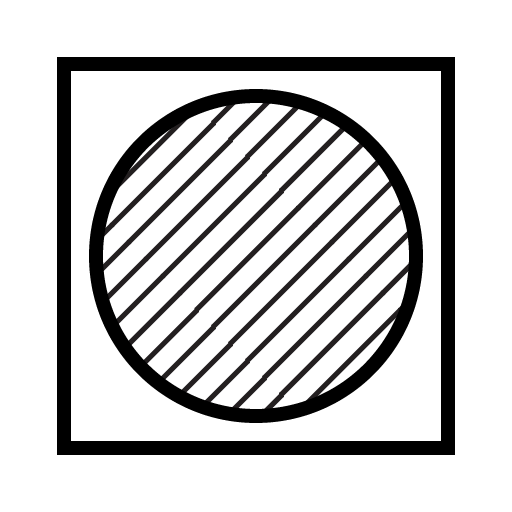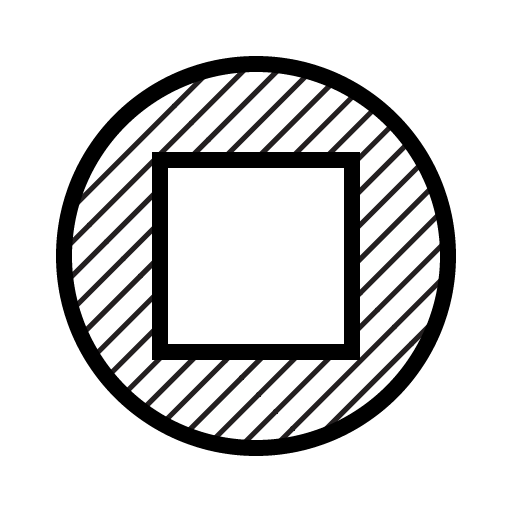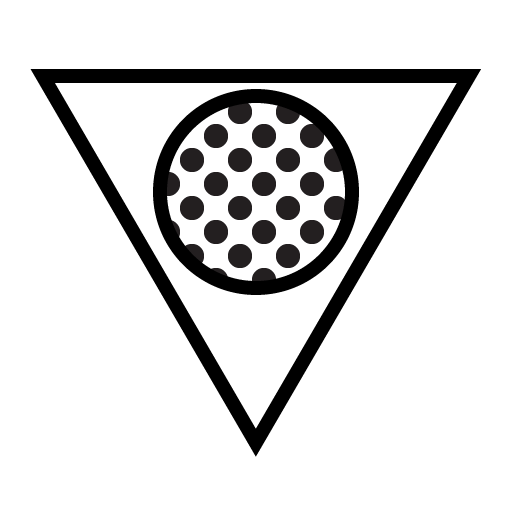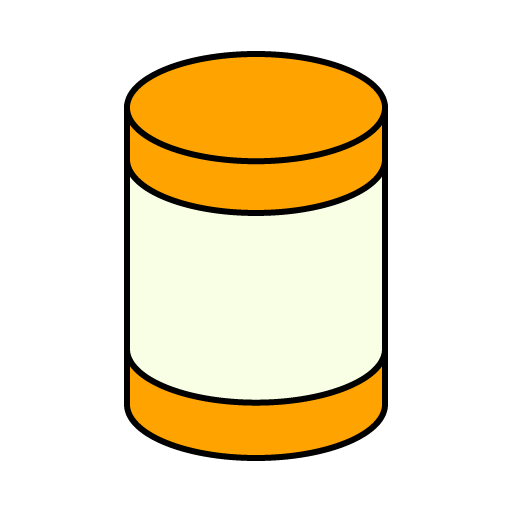Item Variables
Every item of every sub-test in the g-game is described by three variables: response (answer), score and response time. The corresponding dataset item variables have names that are systematically structured as follows:
- Prefix for all g-game variable names: ucg (u denotes the 21 Year dataset, c denotes child [twin] self-reported data, g denotes the g-game study)
- Sub-test prefix: voc (vocabulary), ist (ISTO/NVRA/NVRB), mis (missing letter), rav (Ravens matrices) or ver (Verbal reasoning).
- Item number: 1-8 (vocabulary), 1-9 (ISTO/NVRA/NVRB), 1-6 (missing letter and verbal reasoning) or 01-11 (Ravens matrices). For QC items, the item number is replaced by qc and these items are not included in the numbering. For items 4-6 of verbal reasoning, there are two response variables, distinguished by a/b added after the item number (but note there is still only one score and one response time for each of these items).
- Variable type: item response/answer (an), item score (sc) or item response time (rt).
- In the double entered data, 1/2 for twin/co-twin.
Hence, for example, ucgvoc3sc1 is the twin's score for item 3 of the vocabulary sub-test, and ucgrav07rt2 is the co-twin's response time for item 7 of the Ravens sub-test.
The coding for response/answer item variables is described in the sections below for each sub-test. Generally, responses are coded 1, 2, 3, etc, where the numbering corresponds to the order in which response options were presented on screen. The exception is the Missing Letter test, where the responses are recorded as the letters of the alphabet, 'a' to 'z'. Where a twin has timed out without selecting a response, the response variable has been recoded to the value -1 (or the string '-1' for Missing Letter items).
The coding for item scores, in all cases, is 1=correct and 0=incorrect. The item response time is an integer measurement, in seconds, varying between 0 and the item time limit (these time limits are shown in the sub-test descriptions below).
Item response time variables are measurements in seconds, recorded as integers, ranging from 0 to the item time limit. In a timed out item, the response time is missing.
In addition to the item-level variables described above, there are variables at the level of each subtest as follows.
- Time taken by the twin to read the sub-test instructions. The variable name suffix is inrt, for example ucgvocinrt1/2 is the reading time for the vocabulary sub-test instructions. There was no time limit for reading instructions, hence these variables do not have fixed ranges. The values are integers, measured in seconds.
- Total score for each sub-test. The variable name suffix is tot, for example ucgmistot1/2 is the total score for the missing letter sub-test. Each of these scores is the sum of the sub-test's item scores, and has integer values from 0 up to the number of items in the sub-test (excluding QC items).
- Sub-test status flags. The variable name suffix is stat, for example ucgverstat1/2 is the status of the verbal reasoning sub-test. Each of these variables is coded 2=completed, 0=not completed, or 4=excluded (random responder): this is consistent with the coding used in earlier web studies. Data were not recorded for partially-completed sub-tests. These status flags may be useful to identift cases where twins started but did not finish the g-game, or where random responding has been identified, hence only some of the sub-tests may have been completed.
Any other derived variables, either for sub-tests or for the g-game as a whole, are described on the 21 Year derived variables page.
Mill Hill Vocabulary
This was the first sub-test in the g-game, given the label "Mountain" in the game interface, and based on a much-shortened version of the Mill Hill Vocabulary scale. There were 8 items plus a QC item, all of which are listed below.
The test consists of a series of multiple choice questions. In each question, a single word (the stimulus) is presented at the top of the screen. Below it, 6 other words are presented as the response options. Twins respond by clicking on the response they think is closest in meaning to the word at the top of the screen. There is only one correct response for each question.
In each item, the correct response scores 1 while all other responses (including timeouts) score 0. Responses are coded 1-6 (or -1 for timeout). The total score, with range 0-8, is the sum of the item scores, excluding the QC item.
| Item number, variable prefix |
Stimulus word | Time limit (seconds) | Response 1 | Response 2 | Response 3 | Response 4 | Response 5 | Response 6 | Correct response |
|---|---|---|---|---|---|---|---|---|---|
| 1, ucgvoc1 | Elevate | 20 | raise | revolve | waver | move | work | disperse | 1 (raise) |
| 2, ucgvoc2 | Courteous | 20 | dreadful | polite | curtsy | proud | short | truthful | 2 (polite) |
| 3, ucgvoc3 | Prosper | 20 | imagine | succeed | punish | propose | beseech | trespass | 2 (succeed) |
| 4, ucgvoc4 | Liberty | 20 | freedom | rich | forest | worry | serviette | cheerful | 1 (freedom) |
| QC, ucgvocqc | Man | 20 | guy | girl | baby | child | lady | wife | 1 (guy) |
| 5, ucgvoc5 | Ruse | 30 | limb | trick | colour | paste | burn | rude | 2 (trick) |
| 6, ucgvoc6 | Envisage | 30 | enfeeble | surround | activate | contemplate | estrange | regress | 4 (contemplate) |
| 7, ucgvoc7 | Whim | 30 | complain | tonic | wind | noise | fancy | rush | 5 (fancy) |
| 8, ucgvoc8 | Conciliate | 30 | congregate | pacify | compress | reverse | radiate | strengthen | 2 (pacify) |
ISTO/NVRA/NVRB
This was the second sub-test in the g-game, given the label "Space" in the game interface. There were 9 items plus a QC item, all of which are listed below. These are non-verbal questions based on shapes and patterns.
This sub-test consists of a series of multiple choice questions, in each of which the twin must select one response from a set of five possible responses. There are three types of question within this sub-test.
Sequence questions (1, 2 and 4) each show images in a sequence, in which one is removed and replaced by a question mark. The twin must select the correct missing image.
ISTO questions (3, QC and 6) have images displayed in a logical statement phrased as "X is to Y as Z is to ___", where X/Y/Z are replaced by images. The twin must select the correct missing image to complete this statement.
In group questions (5, 7, 8, 9), the stimulus is an unordered set or group of images. The twin must select the image that correctly adds another member to the group.
In each item, the correct response scores 1 while all other responses (including timeouts) score 0. Responses are coded 1-5 (or -1 for timeout). The total score, with range 0-9, is the sum of the item scores, excluding the QC item.
Before the start of the sub-test, twins were presented with non-scoring example items for the sequences and groups types of question. These example items are also shown below.
| Item number, variable prefix |
Item type | Stimulus images | Time limit (seconds) | Response 1 | Response 2 | Response 3 | Response 4 | Response 5 | Correct response | ||||||||
|---|---|---|---|---|---|---|---|---|---|---|---|---|---|---|---|---|---|
| Example item | Sequences |
|
- |  |
 |
 |
 |
 |
4 | ||||||||
| Example item | Groups |
|
- |  |
 |
 |
 |
 |
4 | ||||||||
| 1, ucgist1 | Sequences |
|
30 |  |
 |
 |
 |
 |
3 | ||||||||
| 2, ucgist2 | Sequences |
|
30 |  |
 |
 |
 |
 |
2 | ||||||||
| 3, ucgist3 | ISTO |
|
40 |  |
 |
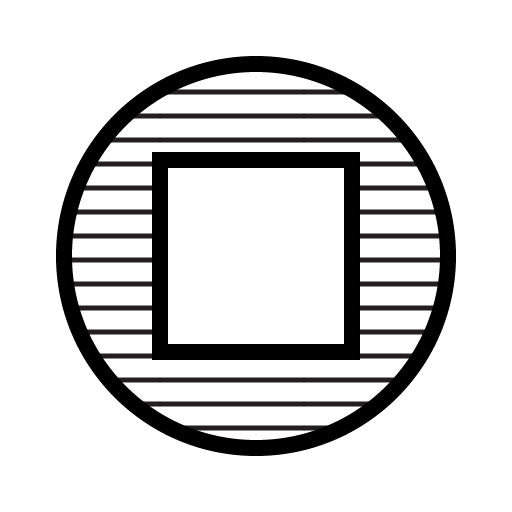 |
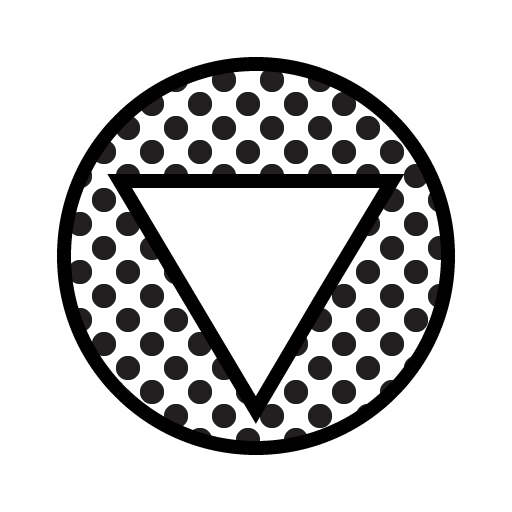 |
 |
4 | ||||||||
| 4, ucgist4 | Sequences |
|
40 |  |
 |
 |
 |
 |
4 | ||||||||
| QC, ucgistqc | ISTO |
|
20 |  |
 |
 |
 |
 |
4 | ||||||||
| 5, ucgist5 | Groups |
|
40 |  |
 |
 |
 |
 |
5 | ||||||||
| 6, ucgist6 | ISTO |
|
40 |  |
 |
 |
 |
 |
5 | ||||||||
| 7, ucgist7 | Groups |
|
40 |  |
 |
 |
 |
 |
2 | ||||||||
| 8, ucgist8 | Groups |
|
40 |  |
 |
 |
 |
 |
2 | ||||||||
| 9, ucgist9 | Groups |
|
40 |  |
 |
 |
 |
 |
3 |
Missing Letter
This was the third sub-test in the g-game, given the label "Tower" in the game interface. There were 6 items (but no QC item), all of which are listed below.
The test consists of a series of multiple choice questions in which the 26 letters of the alphabet are the possible responses. In each question, the stimulus comprises either one or two pairs of part-words, in which the last letter of the first word and the first letter of the second word are missing. Twins have to find the letter that fills the gap(s) and creates complete and correct English words. The 26 letters of the alphabet were displayed on screen and twins responded by clicking on the selected letter. There is only one correct response for each question.
In each item, the correct response scores 1 while all other responses (including timeouts) score 0. Responses are strings, recorded as the letter of the alphabet chosen, 'a' through to 'z' (or '-1' for timeout). The total score, with range 0-6, is the sum of the item scores.
The list includes two non-scoring example items that were included in the sub-test instructions.
| Item number, variable prefix |
Stimulus part-word pairs | Time limit (seconds) | Correct response |
|---|---|---|---|
| Example item | elbo (_) ish | - | w |
| Example item | ban (_) ave, fla (_) ain |
- | g |
| 1, ucgmis1 | fl (_) ell | 30 | y |
| 2, ucgmis2 | ar (_) law, dis (_) oat |
40 | c |
| 3, ucgmis3 | cra (_) ite, ker (_) elt |
40 | b |
| 4, ucgmis4 | hoo (_) oil, bee (_) elt |
40 | f |
| 5, ucgmis5 | slo (_) ake, bea (_) ale |
40 | t |
| 6, ucgmis6 | pa (_) ide, cla (_) ry |
40 | w |
Ravens Matrices
This was the fourth sub-test in the g-game, given the label "Ocean" in the game interface. There were 11 items plus one QC item, all of which are listed below.
This sub-test consists of a series of multiple choice questions, in each of which the twin must select one response from a set of eight possible responses. In each question, the stimulus is a set of patterns or shapes that are logically related to each other in some way. These patterns are displayed as images in a 3x3 grid, but with the final image missing. Twins must select the correct response to fill the gap.
In each item, the correct response scores 1 while all other responses (including timeouts) score 0. Responses are coded 1-8 (or -1 for timeout). The total score, with range 0-11, is the sum of the item scores, excluding the QC item.
Before the start of the sub-test, twins were presented with a non-scoring example item. This example item is also shown below.
| Item number, variable prefix |
Stimulus images | Time limit (seconds) | Response 1 | Response 2 | Response 3 | Response 4 | Response 5 | Response 6 | Response 7 | Response 8 | Correct response | |||||||||
|---|---|---|---|---|---|---|---|---|---|---|---|---|---|---|---|---|---|---|---|---|
| Example item |
|
- |  |
 |
 |
 |
 |
 |
 |
 |
2 | |||||||||
| 1, ucgrav01 |
|
30 |  |
 |
 |
 |
 |
 |
 |
 |
8 | |||||||||
| 2, ucgrav02 |
|
40 |  |
 |
 |
 |
 |
 |
 |
 |
3 | |||||||||
| 3, ucgrav03 |
|
40 |  |
 |
 |
 |
 |
 |
 |
 |
5 | |||||||||
| 4, ucgrav04 |
|
40 |  |
 |
 |
 |
 |
 |
 |
 |
7 | |||||||||
| 5, ucgrav05 |
|
40 |  |
 |
 |
 |
 |
 |
 |
 |
1 | |||||||||
| QC, ucgravqc |
|
20 |  |
 |
 |
 |
 |
 |
 |
 |
2 | |||||||||
| 6, ucgrav06 |
|
40 |  |
 |
 |
 |
 |
 |
 |
 |
8 | |||||||||
| 7, ucgrav07 |
|
40 |  |
 |
 |
 |
 |
 |
 |
 |
1 | |||||||||
| 8, ucgrav08 |
|
40 |  |
 |
 |
 |
 |
 |
 |
 |
1 | |||||||||
| 9, ucgrav09 |
|
40 |  |
 |
 |
 |
 |
 |
 |
 |
3 | |||||||||
| 10, ucgrav10 |
|
40 |  |
 |
 |
 |
 |
 |
 |
 |
4 | |||||||||
| 11, ucgrav11 |
|
40 |  |
 |
 |
 |
 |
 |
 |
 |
7 |
Verbal Reasoning
This was the fifth and final sub-test in the g-game, given the label "Woodland" in the game interface. There were 6 items plus one QC item, all of which are listed below.
The test consists of a series of multiple choice questions. In each question, the stimulus is a logical statement relating to the meanings of words, with either one or two blanks to be filled in. Twins must answer by selecting the word (or words) that fill in the blanks correctly. In questions 1 to 3, and in the QC item, there is just one missing word and twins must choose one word from a list of five presented on screen. In questions 4 to 6, there are two blanks, for each of which a list of four possible words is presented - twins must choose one word from each list. There is only one correct response for each question; in questions 4 to 6, the response is correct only if both missing words are selected correctly.
In items 1-3, and the QC item, responses are coded 1-5 (or -1 for timeout). In each of items 4-6, two responses must be selected and so there are two response variables, each coded 1-4 (or -1 for timeout). In items 4-6, it is possible to select one of the two required responses and then to time out: where this has happened, the selected response (1-4) will be recorded in one of the response variables and -1 will be recorded in the other.
In each item, the correct response (or pair of responses in items 4-6) scores 1 while all other responses (including timeouts) score 0. The total score, with range 0-6, is the sum of the item scores, excluding the QC item.
The sub-test instructions included a non-scoring example item, which is included in the table below.
| Item number, variable prefix |
Response variable(s) | Stimulus sentence | Time limit (seconds) | Response 1 | Response 2 | Response 3 | Response 4 | Response 5 | Correct response |
|---|---|---|---|---|---|---|---|---|---|
| Example item | - | Foot is to knee as hand is to ___ | - | Finger | Elbow | Toe | Leg | Arm | 2 (Elbow) |
| 1, ucgver1 | ucgver1an | Tree is to ground as chimney is to ___ | 30 | Smoke | Brick | Sky | Garage | House | 5 (House) |
| 2, ucgver2 | ucgver2an | Dog is to canine as wolf is to ___ | 30 | Vulpine | Ursine | Piscine | Bovine | Lupine | 5 (Lupine) |
| 3, ucgver3 | ucgver2an | Timber is to paper as hide is to ___ | 30 | Tree | Seek | Ox | Animal | Leather | 5 (Leather) |
| QC, ucgverqc | ucgverqcan | Sky is to blue as grass is to ___ | 20 | White | Green | Pink | Red | Purple | 2 (Green) |
| 4, ucgver4 | ucgver4aan | One is to ___ | 40 | Telescope | Arithmetic | Addition | Solo | - | 1 (Telescope) |
| ucgver4ban | ... as two is to ___ | Subtraction | Abacus | Unicycle | Binoculars | - | 4 (Binoculars) | ||
| 5, ucgver5 | ucgver5aan | Heart is to ___ | 40 | Valentine | Circulation | Blood | Arteries | - | 3 (Blood) |
| ucgver5ban | ... as lungs are to ___ | Organ | Air | Throat | Breathe | - | 2 (Air) | ||
| 6, ucgver6 | ucgver6aan | Rose is to ___ | 40 | Flower | Plant | Rise | Smell | - | 3 (Rise) |
| ucgver6ban | ... as sang is to ___ | Song | Sing | Tune | Bird | - | 2 (Sing) |





















